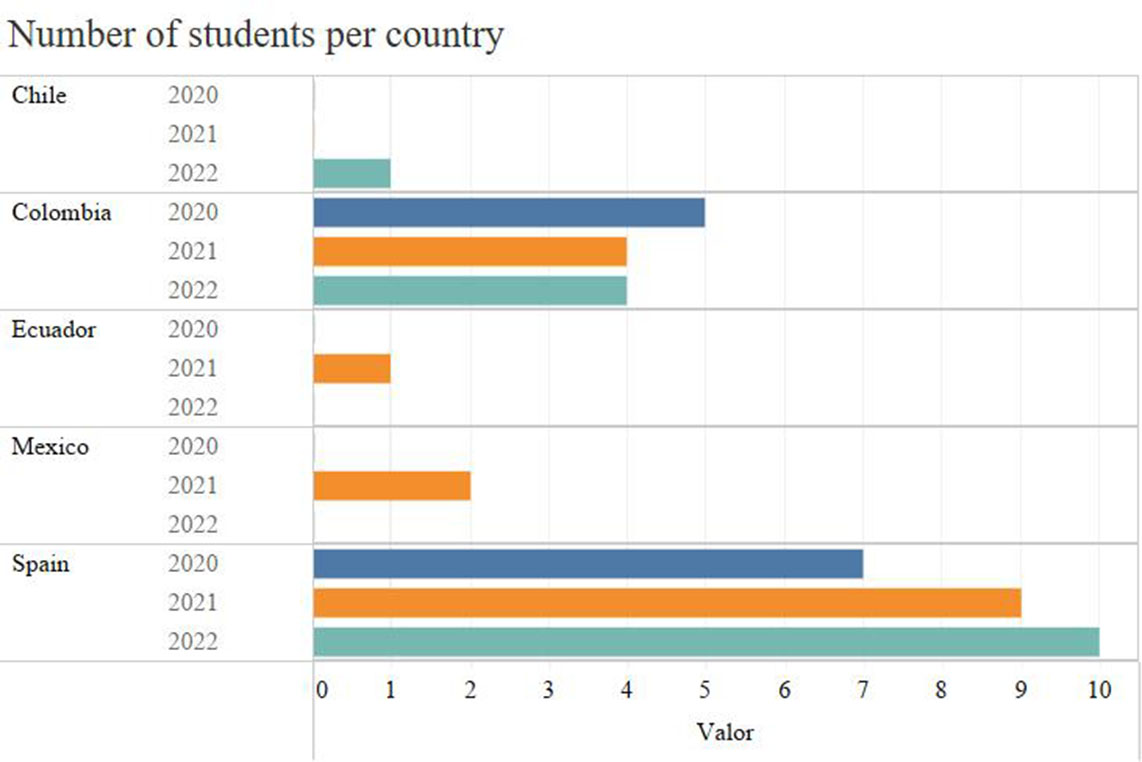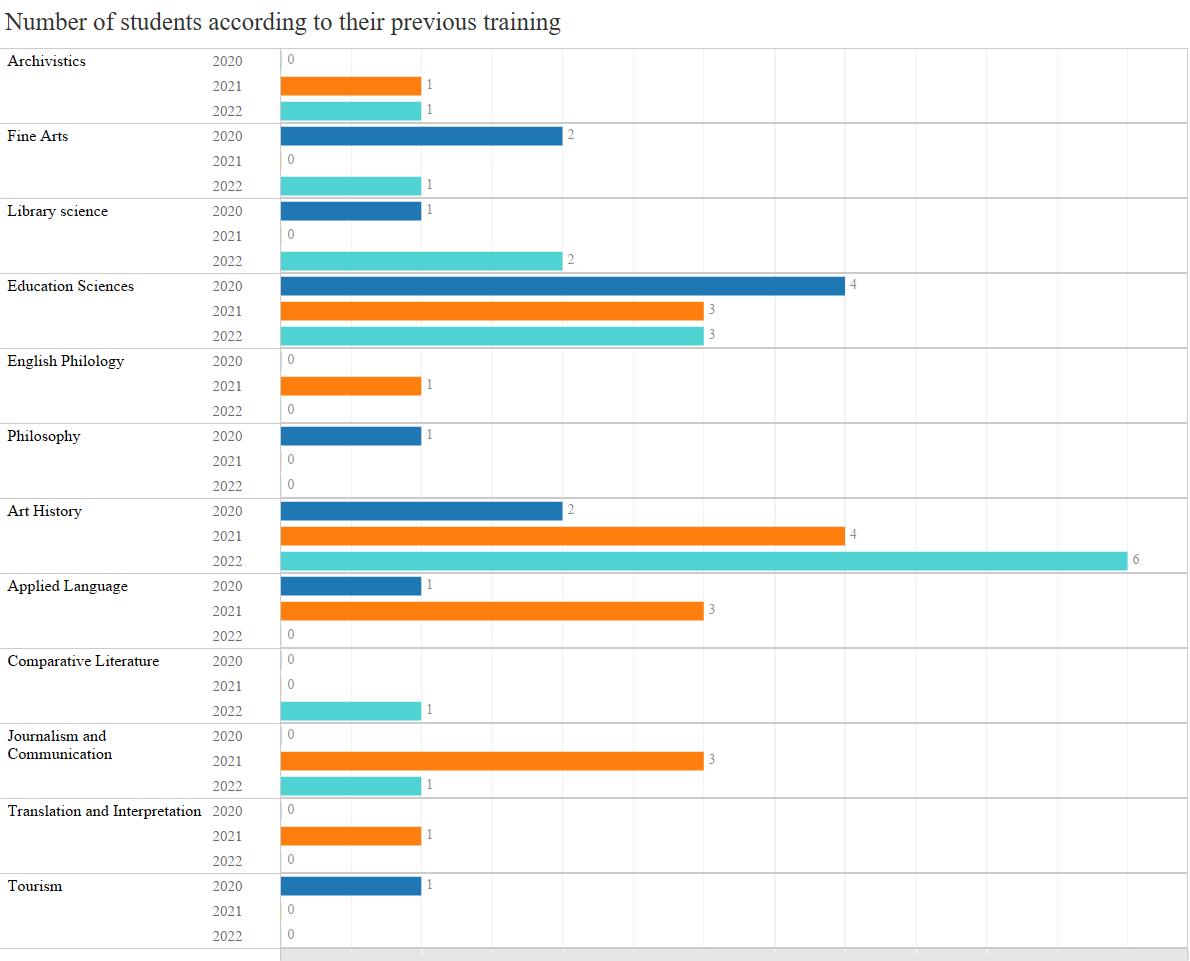
1. Introduction
Despite the difficulty of its exact definition of the Digital Humanities (Schreibman et al. 2016; Ferla et al. 2020), the boundaries of a DH research project may vary depending on the context in which it is conducted (institutional, academic or even business) and the objectives of the project. Also, DH projects usually develop research focused on problems or issues that call for an interdisciplinary perspective 1 and in which collaborative processes sustain a broad and involved participation throughout the project (Svensson 2012; Benatti et al. 2021; Edmond 2016).
This paper presents the virtual teaching experience of the subject "Techniques for the design and development of research projects applied to Digital Humanities" taught during the last 3 years in the Master of Digital Humanities at the University of La Rioja. The main objective of the course is to prepare students to design, develop and manage DH research projects for competitive calls. For this, the method applied is project-based learning (PBL), a student-centered approach, within theoretical classes and practical activities. The subject has a duration of 16 teaching weeks 2 , three practical activities (two individuals and one in team) and a final exam. These sessions are usually quite interactive, with exposure of real projects, questions and discussions about the most important issues during the design and development of a research project in DH.

Fig. 1 Number of Students per country.
2. Teaching Method
In order to facilitate both theoretical and practical learning, the program was structured according to the four phases of the development of a research project: ideation and formulation of the idea; planning; execution and monitoring; and closure.

Fig. 2. The subject and its division in time and project phases.
One of the greatest challenges of teaching in Digital Humanities is that it encompasses a wide diversity of student profiles (Estill and Guiliano 2023) 3 . In these three years of teaching, we have been able to observe that both the syllabus and the activities are well sized if we consider the time of dedication of the students and the teacher, the different levels of knowledge and the wide range of disciplinary profiles of the students. In addition, it is worth noting here that the content is updated and adapted to the students' profiles at each course: for example, we have tried to ensure that the real examples taught in class deal with topics related to the students' profile.
3. Issues and improvements
Concerning the greatest difficulties on the part of the students, we would highlight the following. The first one, and it always coincides with the start of the Master in these three years, is that about 15% of the students do not know very well what Digital Humanities are and what a research project is. They are generally students in the field of fine arts and education sciences who have recently graduated.

Fig. 3 Number of students according to their previous training/profile discipline
The second difficulty, and perhaps the most important, is the understanding of the difference between “objective” and “methodology” and their wording in a research project in DH. This issue has been repeated in the three Master's courses and is something that we also observe in the teaching and mentoring of doctoral students and in the evaluation of projects in Digital Humanities in national and international competitive calls. This problem is clearly evidenced in the development of practical activity one. What is observed is that students tend to attribute to the tool and/or method the leading role of the project, instead of the problem and/or need they want to solve. As a solution, a thorough correction of the submissions is made in which the reformulation and correction of the objectives and methodology of their work is exposed and examples of scientific-technical reports and/or information of projects, in development or already concluded, are also analysed from their web pages and reports.
The third is the difficulty of students to apply issues related to planning and project management thinking in a real research project. Most of the students are not interested and/or find it difficult to incorporate the vision of managing the project, having significant difficulties in breaking down and sizing tasks and activities, using basic digital planning tools to create work plan and chronogram graphs and thinking on how to work and manage a team.
The fourth, and no less important, is related to the writing style of a research project. Most of the students come with a previous knowledge in writing reports, scientific articles and/or essays. However, in the course we emphasize and address aspects that differentiate the writing of a research project for a competitive call and the writing of other types of documents. Here the analysis of real examples and the development of the activities were key to learning. Through the activities, the students gradually practice and outline issues of writing, presentation design and communication, taking into account the guidelines and contents given in class for this purpose.
4. Conclusion
In general terms, we found that one of the major problems to be worked on in future teaching is the understanding and writing of the objectives and methodologies of a project. In this sense, it was particularly interesting to show examples and the relationship between these two sections and the research questions pursued in the projects. Thus, while project-based learning was being developed, the communication of problems and solutions and the corrections made throughout the courses provided effective support to the students.
Through this work, we conclude that offering courses that address the topic of project design and management in DH may be the most pragmatic way for students to develop greater autonomy and more active collaborative skills. Future courses could also focus on exploring in greater depth the issue of research project writing, considering the differences that exist between students' disciplines of origin. Furthermore, for future training designs, it is also important that the experiences carried out are shared openly to the public through conferences, publications, social networks, etc., with a view to promoting continuous improvement of teaching in the DH.
Key words: Teaching Digital Humanities, Research project design, Research project in DH, is project-based learning
In this article we refer to interdisciplinarity as the fact of solving problems and issues through a combination of methods and/or approaches (Klein, 1990).
The face-to-face virtual classes are taught using the Adobe Connect tool, which allows, among other functions: class recording, communication with students via chat or video, the use of a digital whiteboard, sharing and viewing documents, videos and links.
We have conducted a systematic review of the literature where it is observed that there is a lack of publications dealing with teaching experiences on the design and development of the research project in DH. The results of the review will also be presented.